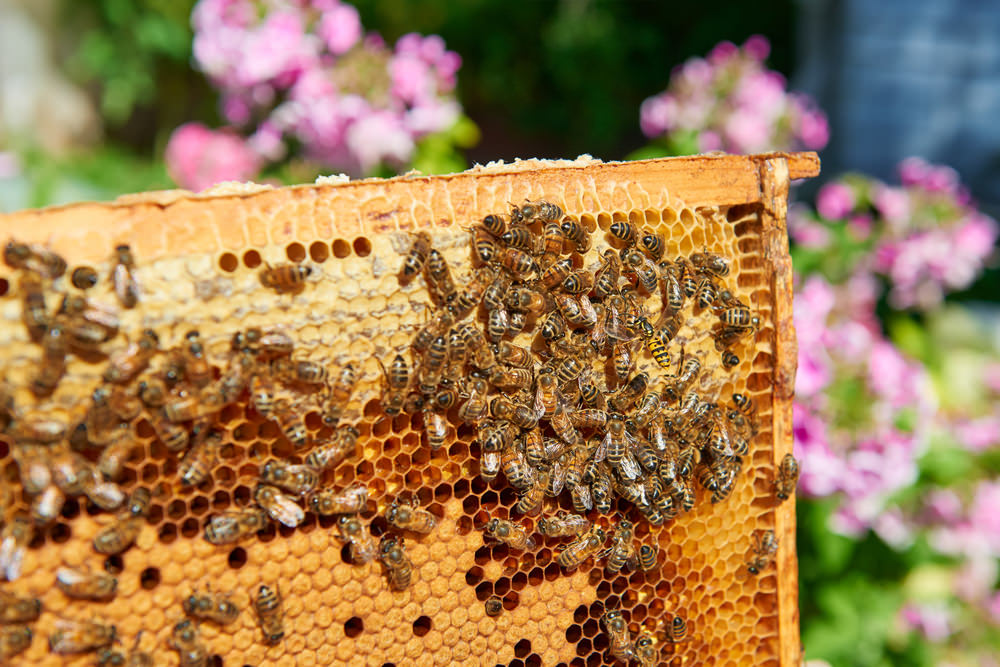You’ve heard of urban gardening, but have you heard of urban beekeeping? Head to the Brooklyn Historical Society on April 23rd to learn more. At this unique event, Timothy O’Neal of Borough Bees gives participants the history and know-how behind this increasingly popular enterprise that is quickly joining the illustrious ranks of Brooklyn-made gastronomy. Deliciously sweet tastings are included at this event. Tickets are $10 general admission, $5 for BHS and G-W Members.
Brooklyn Historical Society connects the past to the present and makes the vibrant history of Brooklyn tangible, relevant, and meaningful for today’s diverse communities, and for generations to come.
Founded in 1863, Brooklyn Historical Society is a nationally recognized urban history center dedicated to preserving and encouraging the study of Brooklyn’s extraordinary 400-year history. Located in Brooklyn Heights and housed in a magnificent landmark building designed by George Post and opened in 1881, today’s BHS is a cultural hub for civic dialogue, thoughtful engagement and community outreach.
BHS’s Othmer Library and Archives houses the most comprehensive collection of materials related to Brooklyn’s history and culture in the world. Each year, thousands of students, scholars, and many other researchers visit to examine manuscript collections, historic maps, photographs, and many other materials. These collections have fueled cutting-edge scholarship on urban history, the built environment, social history, and more. A leader in museum education, BHS serves over 10,000 students and teachers a year at its Brooklyn Heights building and at other partner sites around the city.
Over the years, BHS has updated its building to meet 21st-century needs, while remaining true to architect George Post’s innovative vision. In October 1999, BHS undertook a full-scale restoration of its landmark building to create new exhibition space and climate-controlled storage for its valuable collections. In 2014, BHS completed a renovation of the first and lower levels to create an even more welcoming public space. The institution also launched its critically acclaimed new exhibit, Brooklyn Abolitionists: In Pursuit of Freedom, which reveals the unknown stories of Brooklyn activists who fought for freedom and racial justice in the 19th century.
Brooklyn Historical Society’s four-story Queen Anne-style building was completed in 1881. Designed by renowned architect George Browne Post, the building features terra cotta ornamentation on the façade and an innovative truss system to support the ceiling of the central library. Architectural historians have praised Post’s design for blending technological innovation and graceful aesthetics.
The building’s masonry consists of unglazed terra cotta and repressed brick. It was the first building in New York City to use locally produced terra cotta. The facade is adorned with busts of Christopher Columbus, Benjamin Franklin, William Shakespeare, Johannes Gutenberg, Ludwig van Beethoven, and Michaelangelo Buonarroti sculpted by Olin Levi Warner. Their depictions are interspersed with representations of American flora by Truman H. Bartlett.
Post employed artists and craftsmen of the Aesthetic Movement to embellish the interior spaces. Stained glass in-window lunettes and a central laylight are believed to have originated from the studio of noted artist Charles Booth. Decorations throughout the building include Minton tile floors, custom-made bronze hardware (designed by Post), and elaborately carved black ash woodwork in the library.
Inspired by the design of the Brooklyn Bridge, Post suspended the top floor of the building from iron trusses in the roof, creating an open and elegant reading room. Additional iron columns enclosed in carved wood support the galleries in the library.
In July 1991, the building was recognized as a National Historic Landmark and included on the National Register of Historic Places. Portions of the interior, including the library, were made interior landmarks by the City of New York – a rare designation in Brooklyn.

